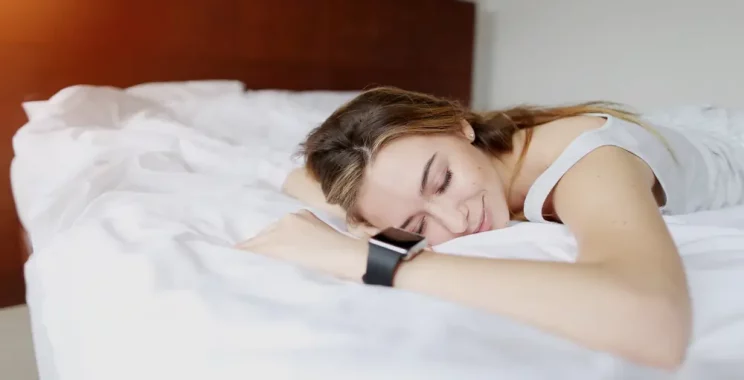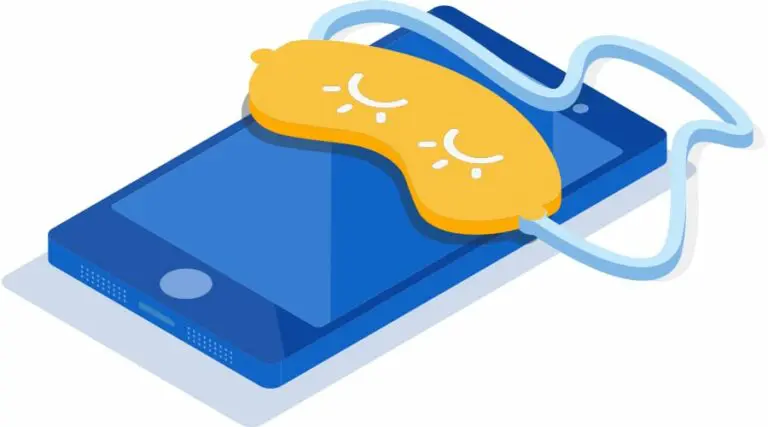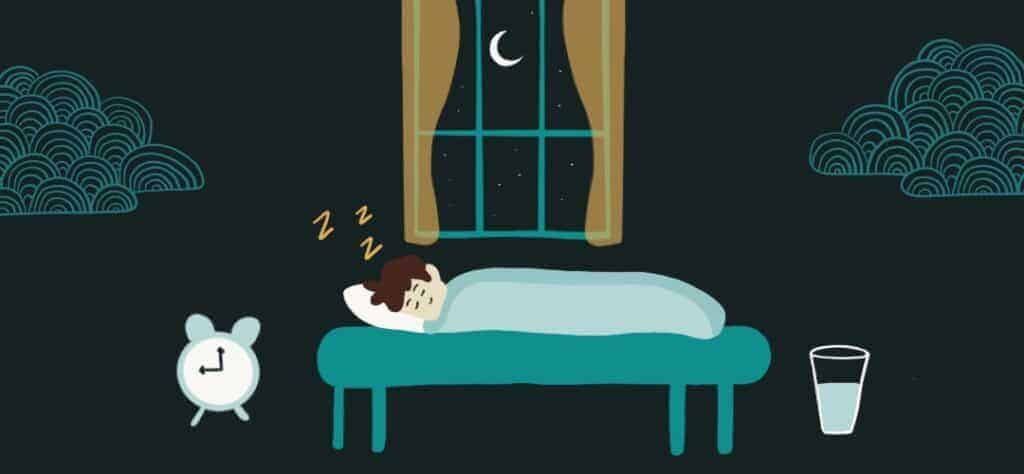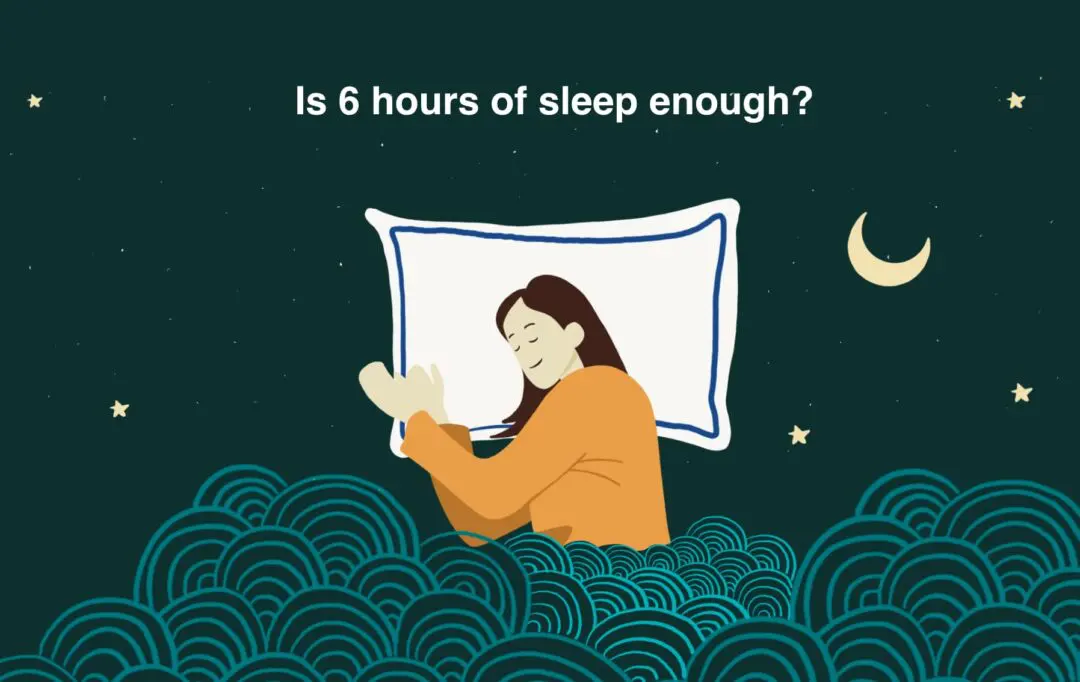Sleep Patterns – Sleep is an inevitable part of our lives with most of us yearning for a good night’s sleep after a long day. Our body follows its own circadian rhythm or sleep cycle where the body slows down to go into sleep mode for several hours then waking up afterwards.
Sleep Patterns – A Simple Explanation Of Your Four Nightly Sleep Cycles
Share
Fact checked
Reviewed by experts
Updated
December 5, 2022
Quick read
7 mins to read
List of Content
This can also be referred to as the light-dark cycle because the body produces melatonin as soon as the light starts to fade to prepare us for sleep. Yes, it’s straightforward, and in most cases, people don’t really give the sleep-wake cycle much thought. But what exactly happens when you are sleeping? And how does light and dark play a part in our sleep?
Sleep Pattern Definition & Meaning
Researchers have discovered that there is more to sleeping and waking. It seems that sleep can be a bit complicated too. There are sleep patterns that our body follows as we slow down at night. What is sleep pattern meaning? It is basically the stages of sleep that we go into from the moment that we nod off at night to waking up at first light. There are basically two distinct parts in our sleep cycle and these are nREM or Non-REM sleep and REM sleep or “Rapid Eye Movement”.
Here’s how your body reacts to each sleep phase:
Sleep Patterns – First stage
Your brain begins to produce alpha and theta waves as your eye movement is reduced. This stage can be referred to as the introduction to sleep and may last up to seven minutes or so. You are entering light sleep at this point where your brain is somewhat alert and you can be jolted out from your sleep easily.
Sleep Patterns – Second stage
You are still in a light sleep stage at this point, but it is here where your brain produces sleep spindles or a sharp increase in brainwaves frequency. Afterward, it will slow down. You are still in nREM sleep at this point which means that there are no eye movements still.
Sleep Patterns – Third and fourth stage
It is at this stage of sleep where you are starting to go into deep sleep. The brain is now producing delta waves which means that you are now less likely to wake up suddenly. Researchers call this as the slow-wave sleep since your body is no longer responding to whatever it is that is happening in your environment. Going into deep sleep allows your body to restore and repair itself, enhance your immune system, and even support growth.
Sleep Patterns – REM sleep
Your body goes into REM sleep after 90 minutes or so from the moment you fall into light sleep. Each stage of your REM sleep can even last up to an hour. Most adults undergo five to six REM sleep cycle every night and it is here where your brain becomes more active. When you are in REM sleep, you will enter the dream phase of your sleep with your eyes moving rapidly from side to side. Your breathing changes from slow to rapid and irregular while your blood pressure, as well as your heart rate, go up. You will need to go into REM sleep as it is critical for memory and learning function.
What Is A Normal Sleep Pattern?
What is a normal sleep pattern? There are three different sleep patterns that people follow and these are:
Monophasic sleep pattern
Most people follow the monophasic sleep pattern where you sleep for just one block of several hours with the number of hours varying from one person to the next. And because it is being followed by a large number of the population it is considered as the normal sleeping pattern today.
Biphasic sleep pattern
As the name suggests, this pattern refers to a person falling asleep two times in a day. This sleep pattern is typical in Latin American countries as well as Spain where people take naps in the afternoon. The longer sleep happens at night and the shorter one during the morning or afternoon.
Polyphasic sleep pattern
In this sleep pattern, a person sleeps several times in a day. The time usually differs from one person to the next. Babies and toddlers tend to follow this pattern as their body is still adjusting. One example of this is the Everyman Sleep Pattern where the core sleep is just for 3 hours where both nREM and REM happens.
Healthy Sleep Patterns
Now that you have an idea on sleep patterns, which ones can be considered as healthy sleep patterns? Most of us would say that we should get 7 to 9 hours of sleep but the number of hours of sleep may vary depending on where you are located. In westernized countries, the typical recommended sleep time is around 7 to 9 hours for adults, but there are circumstances that can prevent them from getting a good night’s sleep such as insomnia, obstructive sleep apnea, and other sleep disorders. One example to this is the rubber tappers in the Amazon where those who are exposed to artificial light tend to sleep less compared to those who are exposed to natural light because their circadian rhythm has been altered. Socio-demographic factors can affect sleep patterns all over the world.
Newborn / Infant / Baby Sleep Pattern
Parents are often wondering about baby sleep patterns especially when this is their first time to have a baby in the house. The good news is that, based on newborn sleep patterns, babies typically sleep much of the morning and at night with being awake every few hours just to feed. If you are looking for infant sleep patterns, there is none yet since their sleep cycle hasn’t formed just yet.
Babies also go into nREM and REM sleep cycle where they enter the first stage when they start to nod off while trying to be alert. The second stage is still the light sleep stage and they may easily wake because of a loud noise. As they enter the third and fourth stages, your baby is already in deep sleep and will be harder to wake them up. They will then move to REM sleep or the dreaming stage. Since babies tend to sleep most of the time, they will follow the cycle several times in the day. [4]
Toddler Sleep Pattern
You’re probably wondering what the normal sleep pattern for toddlers is as you watch your infant grow up before your eyes. According to toddler sleep patterns, toddlers will need 11 to 12 hours of sleep at night with an hour and a half to two hours of nap time during the afternoon. Toddlers will be going to bed between the hours of 7 and 9 at night and can wake up around 6:30 to 8 in the morning. Their sleep patterns mean that they will be spending more time in nREM or deep sleep as well as REM sleep which can prompt them to wake up several times since they are still transitioning to a more normal sleep pattern.
Child Sleep Pattern
School-aged children will need about 10 to 11 hours of sleep, but it is at this stage where sleep problems may occur because some kids want to stay up later at night because they are not sleepy yet. There are other factors that can cause sleep deprivation in children such as a change in their sleep habits, as well as the appearance of sleep apnea, sleep paralysis, nightmares, and even delays in getting into bed or insomnia. Unfortunately, when their sleep quality is not good, you can expect changes in their mood, health, and growth since they are not getting enough nREM and REM sleep. Lack of sleep can also affect how they study which can be detrimental to their mental growth. You will need to make sure that your child gets the total sleep as recommended by the National Sleep Foundation.
Teen Sleep Pattern
What about sleep patterns for teens? Teens are experiencing a shift in their sleep cycle where their sleep will be moved to the later part of the day so it is quite normal for them not to be in bed before 11 in the evening. Still, teens need enough time to recuperate which is why they should still get 8 to 10 hours of sleep every time. And because most teenagers nowadays are not getting the recommended total sleep time, many of them experience sleep disturbances that make it hard for them to fall asleep. Unfortunately, this can affect the amount of non-REM and REM sleep per day which can affect their health. You will have to help your teen to adjust their sleep onset so that they will be in bed at the right time.
How To Adjust Sleep Pattern
It’s not surprising that many of us can’t fall asleep easily at night, what with our age, current lifestyle, and other factors too. More often than not, during our childhood stage and teenage years, our sleep cycle changes. Unfortunately, this affects the amount of deep sleep and REM sleep that we are getting which can affect the recovery process of our body. Keep in mind that we need to undergo the full sleep cycle several times in order for our body to repair and recover, while our mind processes all the information and memories that we have accumulated throughout the day. What can we do then?
If you need to adjust your sleeping habits, using a fitbit app may help you keep an eye on your sleep cycle. Get the average hours of sleep per week so you will know when the right time for you to go to bed is.
Unhealthy Sleep Patterns
With regards to sleep patterns that are considered unhealthy, these are basically sleep cycles that don’t meet the average hours of sleep depending on the age bracket. Although there are some who are capable of functioning well even when they only got less than six hours of sleep, following this sleep pattern at night can lead to various health issues such as early onset of Alzheimer’s Disease, sleep apnea, insomnia, and other sleep disorders that can be avoided if we only train our bodies to follow their natural circadian rhythm and be in bed at the right time to be able to go through the first stage of sleep and the succeeding stages naturally.
Those with unhealthy sleep cycle include those who work for more than 40 hours a week and are sleeping for only a few hours because they need to be up to go work at early light, night owls and caffeine drinkers who tend to sleep later at night but spend some time napping in the afternoon and are thriving in caffeinated beverages to keep them wide awake to complete their tasks. Those who belong in these groups tend to experience insomnia as well as obesity.
Disturbed Sleep Pattern
What about disturbed sleep pattern? Those who follow this sleep pattern are those who have irregular sleep cycle where they can sleep to an hour or four several times within a 24-hour period. Although the sleep pattern is different from the others, those who follow this sleep cycle are not sleep deprived. The only thing that make them different from the others is that their sleep is spread throughout a 24-hour period.
Those who have disturbed sleep patterns often experience transitioning to wakefulness and may have insomnia at times too since they can’t complete the normal sleep cycle where they move from non-REM to REM. What causes this sleep pattern to happen in the first place is the absence of the sleep-wake cycle which can make it difficult for you to transition from sleeping to waking at the right time regardless of whether there is light or darkness. And since you are not experiencing non-REM and REM continuously, your body is not getting its much-needed rest thus putting you at health risk.
Is this article helpful?
Disclaimer
This website does not offer medical advice nor professional medical services; rather, it is provided solely for educational, informational, and/or entertainment purposes. Individuals seeking medical advice should consult a licensed physician. The information provided should not be used for diagnosis or treatment of any condition, disease, or injury. When you have a medical condition, you should always talk to licensed doctor or other certified medical professional. You should never delay seeking professional medical advice or treatment based on the contents of this website. Call 911 or immediately go to the nearest emergency room if you think you may have a medical emergency. The contents of this website are provided “as-is”, Sleep Authority and its parent, subsidiaries, affiliates, employees, contributors disclaim any warranty of the information contained herein. Please contact using contact form to report any errors, omissions, misinformation, or abuse.
Bedding Guides
Sleep Authority by Resident
Sleep Authority is brought to you by Resident, the company that brings you Nectar, DreamCloud, Awara, Wovenly, Bundle, Home Well Designed and Level Sleep.
©2024 Sleep Authority. All rights reserved.








